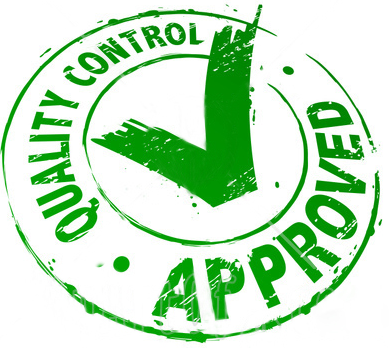16. Total Quality Management
Total Quality Management (TQM) is an approach that organizations use to improve their internal processes and increase customer satisfaction. When it is properly implemented, this style of management can lead to decreased costs related to corrective or preventative maintenance, better overall performance, and an increased number of happy and loyal customers.
Quality
Quality is about meeting the needs and expectations of customers. How the recipient of the product or service views the product or service: before buying, upon delivery, and after the delivery-and use.
The meaning of quality differs depending upon circumstances and perceptions. For example, quality is a different concept when focusing on tangible products versus the perception of a quality service. The meaning of quality is also time-based or situational.
Common definations of Quality:
1- Quality is fitness for use:
Quality means the product or service does what it is intended to do.
Poor quality of a product or service cost users if it doesn't do what it is supposed to do.
2- Quality is meeting customer expectations:
Quality is satisfying the customer.
The customer defines quality.
The customer perceives the quality of a product or service.
3- Quality is exceeding the customer expectations.
Quality is the extent to which the customers or users believe the product or service surpasses their needs and expectations.
Quality is delighting the customer.4- Quality is superiority to competitors:
Quality is how a companys products and services compare to those of competitors or how they compare to those offered by the company in the past.
To achieve quality according to this definition, we must consider quality and product policy, product design, manufacturing and final use of the product.  Quality and product policy A product or service is a combination of tangible and intangible characteristics that a company hopes the customer will accept and be willing to pay a price for. Product planning must decide the market segment to be served, the level of performance expected, the price to be charged and must estimate the expected sales volume.
Quality and product policy A product or service is a combination of tangible and intangible characteristics that a company hopes the customer will accept and be willing to pay a price for. Product planning must decide the market segment to be served, the level of performance expected, the price to be charged and must estimate the expected sales volume.
Quality and product design Product designers must build into the product the quality level described in the general specification. They determine the materials to be used, dimensions, tolerances, product capability and service requirements.
Quality and manufacturing At the least, manufacturing is responsible for meeting the minimum specifications of the product design. Quality in manufacturing means that , at a minimum, all production must be within specification limits and the less variation from the nominal the better the quality.
Quality and use Customers do not care why a product is defective, but they care if it is defective. If the product has been well conceived, well designed, well made, well price and well serviced, then the quality is satisfactory. If the product exceeds the customer’s expectations, that is superb quality